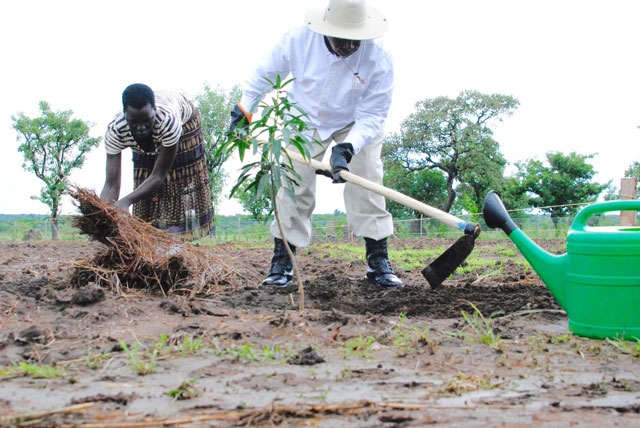If agriculture remains the backbone of Uganda’s economy, then water is its lifeblood and President Yoweri Kaguta Museveni is determined to ensure that this lifeblood flows steadily across the country.
In a renewed push to transform the agricultural sector, the President has unveiled a large-scale irrigation and water-for-production investment plan aimed at reducing Uganda’s reliance on rain-fed farming.
The initiative, outlined under the National Resistance Movement (NRM) manifesto theme “No Turning Back,” seeks to empower farmers with sustainable access to water and boost productivity across all regions.
For decades, Uganda’s farmers have battled unpredictable weather patterns, planting in hope and losing crops to prolonged dry spells. The government’s new approach marks a decisive shift from dependence on seasonal rains to a structured irrigation system that can sustain year-round production.
According to officials from the Ministry of Water and Environment, seven major irrigation schemes are already operational. These include Ngenge in Kween, Rwengaaju in Kabarole, Tochi in Oyam, Mubuku II in Kasese, Olweny in Lira, Doho II in Butaleja, and Wadelai in Pakwach. The schemes are providing a reliable water supply to thousands of smallholder farmers, significantly increasing yields and improving livelihoods.
Construction is underway on three additional mega projects: Acomai in Bukedea, Atari straddling Kween and Bulambuli, and the Namatala project serving Budaka, Mbale, and Butaleja districts. Government sources describe these as “transformational investments” that will serve as models for sustainable water use in agriculture.
Beyond the large schemes, the NRM government has also rolled out over 4,300 micro-scale irrigation systems and 5,251 small and medium-sized facilities across 135 districts. Many of these are solar-powered, providing affordable and environmentally friendly options for farmers.
The President has repeatedly emphasized that irrigation is central to achieving food security and increasing household incomes. “We cannot continue to depend on the mercy of rainfall,” he recently said during a tour of irrigation sites in western Uganda. “Water must be brought to the crops, not crops waiting for water.”
Across the regions, several smaller schemes are already changing livelihoods. In eastern Uganda, projects like Amagoro and Angololo in Tororo, Sipi in Bulambuli, and Cheptui in Kapchorwa are turning dry lands green. In Karamoja, Namalu in Nakapiripirit and Hopei in Napak have provided relief in areas once synonymous with drought. Northern Uganda has seen progress in Gulu, Amuru, Arua, and Nwoya, while in western Uganda, Kabuyanda and Matanda dams are supporting commercial farmers and pastoralists alike.
The drive also extends to valley dams and water tanks built along the cattle corridors, from Mbarara to Nakapiripirit, ensuring livestock access to water even during dry seasons.
Experts view the initiative as a critical step toward climate resilience. With Uganda’s economy still heavily dependent on agriculture, which employs over 70 percent of the population, sustained irrigation could reduce the country’s vulnerability to climate shocks and strengthen food exports.
The government insists that the investment in water for production is not merely about infrastructure but a strategy to guarantee national food security and promote agro-industrialisation.
As one senior official at the Ministry of Agriculture put it: “The vision is clear, to turn Uganda’s potential into productivity. Water is at the centre of that journey.”
With thousands of projects already functional and more under construction, the NRM’s irrigation agenda is fast reshaping Uganda’s agricultural landscape. Whether it will fully deliver on the promise of self-sufficiency remains to be seen, but for many farmers, the water is finally flowing and so is hope.


